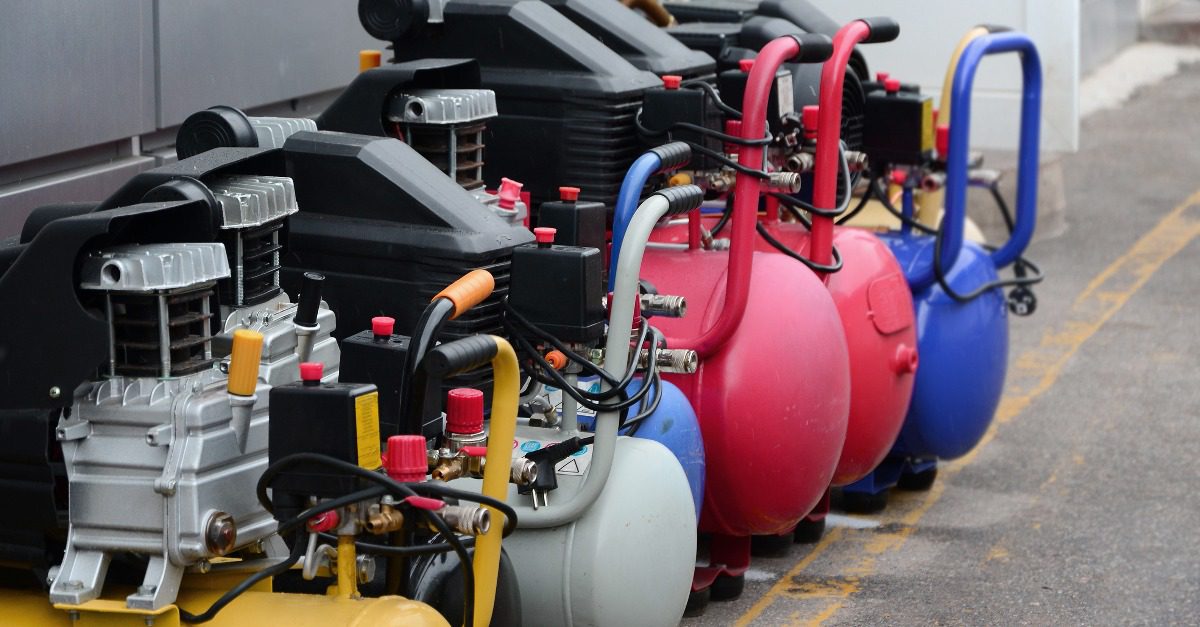Exploding Portable Air Tank: Were There Clues to the Impending Failure?

John R. Yannaccone, P.E., Principal Mechanical Engineer
Incident Description: A man received a call from his daughter, who had a flat tire and needed his help. The man grabbed a portable compressed air tank, which he planned to use to fill his daughter’s tire so she could drive it to the tire shop. Despite knowing the air tank had a small leak, he took it to the tire shop to have it filled. When he arrived at the shop, he reportedly told the manager the air tank had a small/slow leak. The manager told him not to worry about it and to follow him to the service area. The manager used a shop airline to fill/pressurize the portable tank. In the process of filling the air tank, there was an explosion and both men were found on the floor with serious injuries. The gentleman who brought in the air tank sustained head and chest injuries, including a severe eye injury. The manager also sustained injuries, primarily to his legs and chest.
Analysis: The remains of the air tank provided information about both the pre-failure condition of the tank and the cause of the incident. While the tire store manager claimed he was familiar with portable air tanks and confirmed the condition of the air tank before filling it, he failed to identify many issues that should have indicated that the air tank should not be filled. The first is the man’s indication that the air tank had previously leaked; leakage is an indication that the condition of the tank has deteriorated and may be compromised. The general appearance of the air tank clearly showed it was an older tank, with several areas of pitting and corrosion on the exterior. The attached hose appeared to be very old and had signs of cracking, in addition to lacking a valve between the tank and the hose. The air tank was also lacking some of the features seen on modern portable air tanks, including a pressure relief valve, drain valve, indication of working pressure, and date of manufacture or expiration date. All of these issues should have indicated to the manager that the air tank was too old and should not have been used.
Research during the investigation of this 2018 failure revealed the subject air tank was manufactured between 1969 and 1975. In 1973, the manufacturer recalled these air tanks due to the tanks rupturing. Air tanks, such as this one, have a limited life which is frequently the result of interior corrosion caused by condensation as warm, compressed air cools. Therefore, most portable air tanks now have drain valves to allow the condensation to be removed from the tank. Without such a valve, the interior moisture will cause corrosion on the inside of the tank, weakening the strength of the material. In some cases, this corrosion will result in pin holes through the tank wall and small leaks before the damage gets to the point of a catastrophic failure. This condition likely existed for the subject tank.
Inspection of the interior of the tank and the failure surface confirmed the presence of interior corrosion that had reduced the thickness of the material, thus reducing the strength of the tank. As the manager increased the internal pressure by filling the tank with air, the stress in the tank wall increased until it exceeded the strength of the tank. This resulted in the tank rapidly failing, releasing the energy stored in the compressed air. Since there is no way to know how much the inside surface of an air tank has been degraded, many manufactures now provide an expiration date on their tanks, at which time they recommend that the tank be taken out of service. They also indicate the safe working pressure for the tank and provide a relief valve to vent any excess pressure.
In this case, the tire store did not provide their employees and managers with any training or guidelines to determine when it was acceptable to fill a portable air tank or when they should decline to fill it. This lack of training exposed both customers and tire store employees to the risk of a catastrophic failure of the air tank and, in this case, led to a man’s complete loss of sight.
Categories: John R. Yannaccone | Mechanical Engineering | Portable Air Tank


